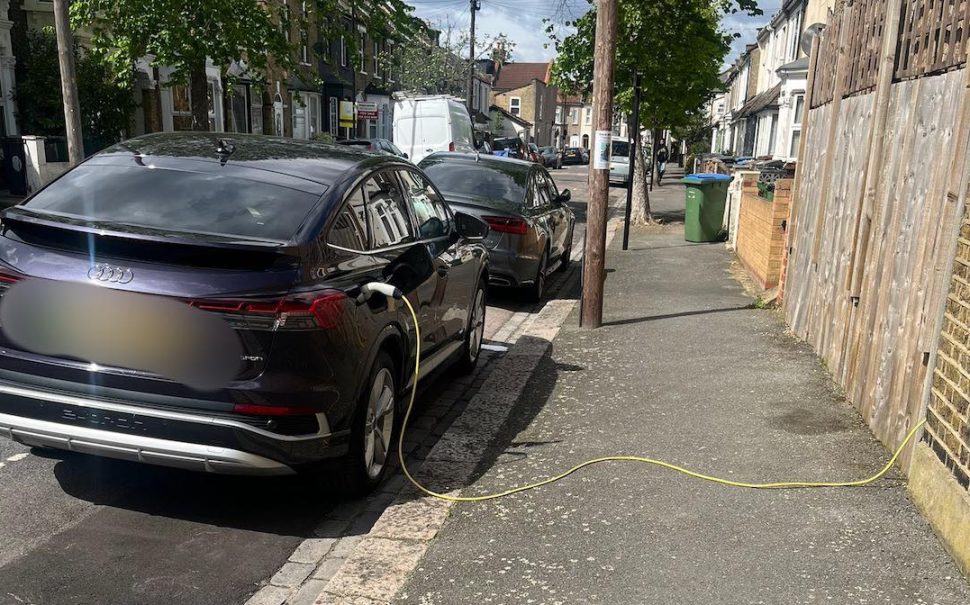Electric vehicle charging cables left trailing in the street pose a serious risk to pedestrians in London, warn EV experts.
Instead of using public car charging stations, many electric car owners choose to trail cables across the pavement from their homes, leading to safety issues for wheelchair users and other pedestrians.
The problem is likely to worsen as electric car ownership continues to soar, with the first quarter of 2024 seeing 25% more in sales than the same period last year, according to the International Energy Agency’s Global EV Outlook.
Tom Riley, founder of EV publication The Fast Charge, said: “Charging a car using public networks can be pricey which is why a lot of EV owners choose to refuel at home using their electricity, which is often significantly cheaper.
“However, this is much harder to do when you do not have access to off-street parking, and understandably many drivers ‘risk it’ by trailing cables across the pavement to their car.
“Drivers may feel this action is harmless, but it presents members of the public with an obstacle that should not be there – not to mention, should someone trip up, it can make owners liable.”
Riley added that about a third of homes in the UK do not have access to off-street parking, making EV charging a challenge, but celebrated that some solutions are starting to emerge.
These include cable gullies, local EV charging hubs, and apps where owners can share a neighbour’s charger.
The government also has a £400m investment fund to aid the rollout of electric vehicle infrastructure.
Living Streets is a charity that is vocal on the matter of EV cables, and campaigns for the general decluttering of the UK’s pavements to improve walkability and disabled access.
Policy and Research Manager Rachel Lee said: “Electric vehicle charging cables on our pavements are more than a nuisance — for people with wheelchairs, buggies or those living with sight loss, they are dangerous.
“We’re already hearing from people who are being put off from walking or wheeling by this unnecessary street clutter — that’s terrible.”
Lee added that charging points being installed on public pavements is also a growing problem.
She said: “Our towns and cities should be places where walking is the natural choice and blocking up pavements with EV charging points flies in the face of that.
“At Living Streets, we want a commitment from local authorities that EV charging points will only be placed on pavements where at least 1.5m clearance width for pedestrians can be maintained.”
The charity has produced action packs for people to campaign for the safe placement of EV charging points, which are available to download at livingstreets.org.uk.
Feature Image Credit: Accessible Streets London





